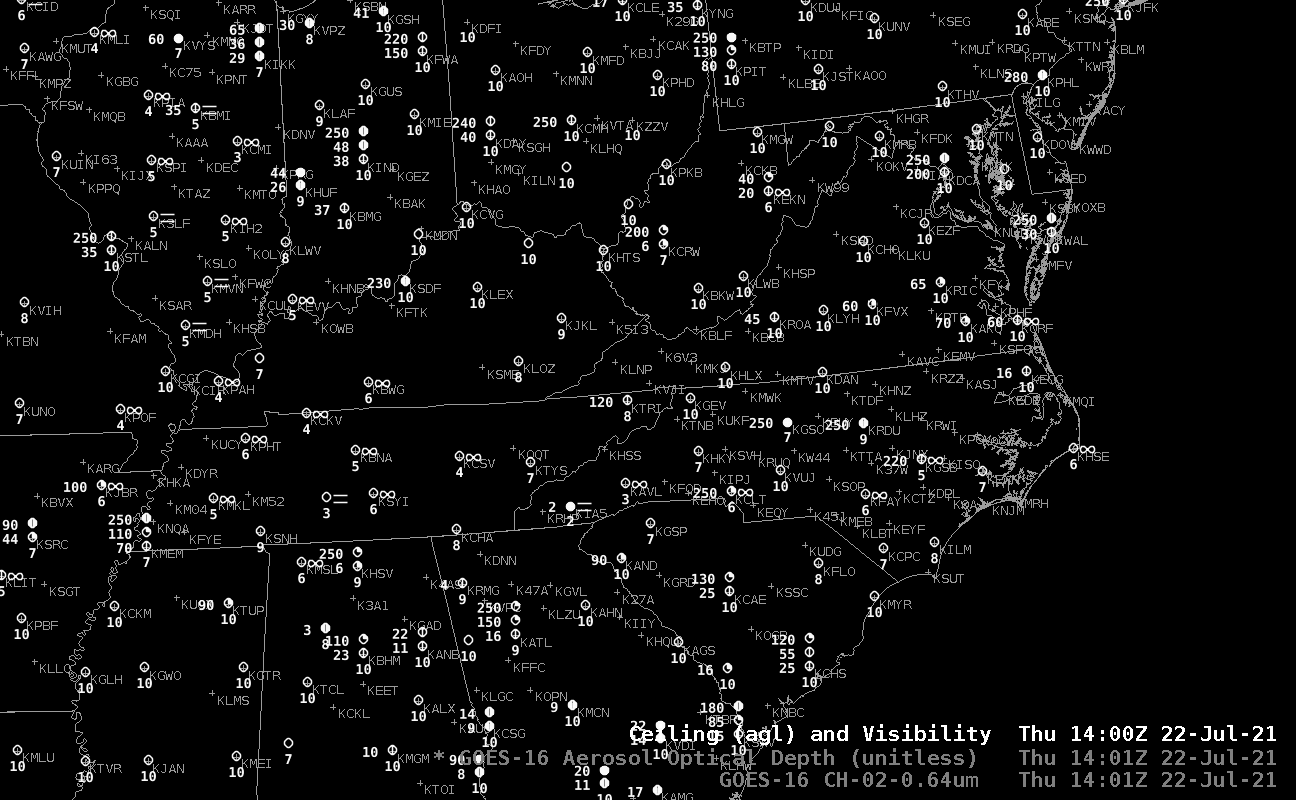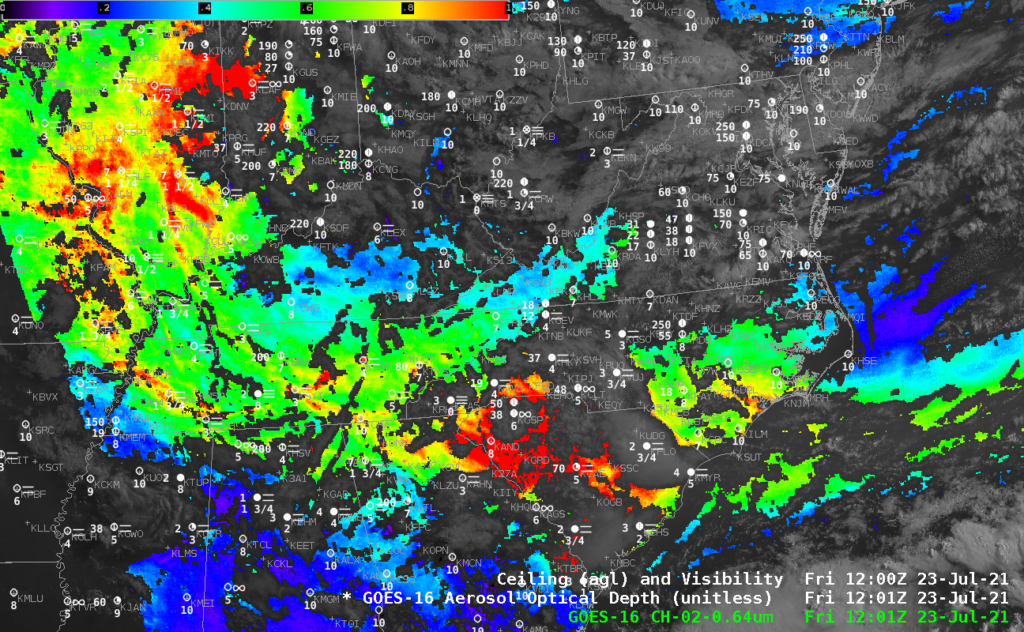Aerosol Optical Depth and surface visibility

The image above shows the Level 2 GOES-R product, Aerosol Optical Depth (AOD), a product created in clear skies, overlain with the GOES-16 Visible imagery from the same time. AOD measures the extinction of light via scattering and absorption by small particles in the atmosphere, and it can be used as a proxy for particles smaller than 2.5 µm in diameter (PM25). The red regions show the highest values. The plot below shows surface observations of ceilings (plotted to the left of the circles) and visibility (plotted below the circles) at the same time as the AOD image above. Is there a relationship?
Look at the string of lower visibilities stretching along the North Carolina/South Carolina border, extending westward to Tennessee and then northward into Illinois. This is the region where AOD exceeds about 0.4 — cyan in the enhancement used above. In this instance, AOD can be used to highlight regions where surface visibilities are most restricted by aerosols. (Some of these aerosols are likely from smoke. However, this product does not tell you what kind of aerosol is there, only that it is causing extinction).

The toggle below steps through the observations, AOD, and Visible imagery at 1401 UTC. Kudos to Frank Alsheimer, the Science and Operations Office (SOO) in Columbia SC, for alerting us to this case.

True-color imagery, below, (saved in this case from the CSPP Geosphere site, using this link) also shows the extent of the aerosol-rich air.

The relationship between AOD values and surface visibility persisted on 23 July 2021, below.


